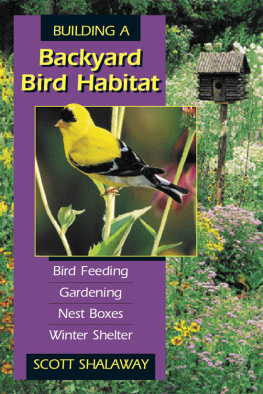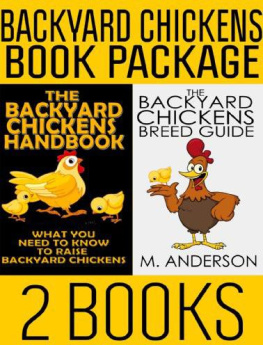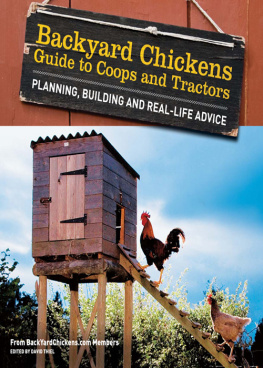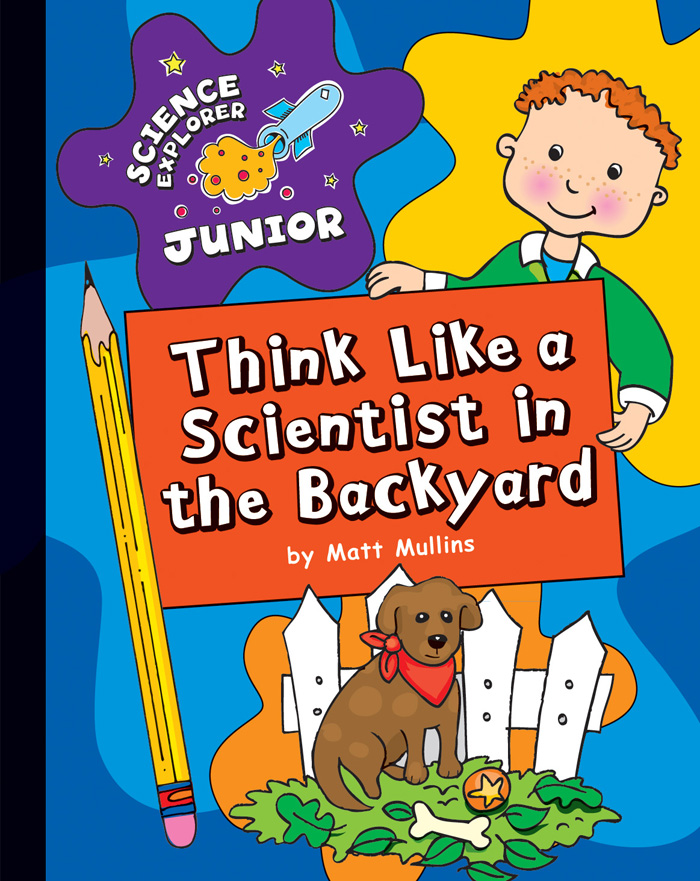

Published in the United States of America by Cherry Lake Publishing
Ann Arbor, Michigan
www.cherrylakepublishing.com
Content Editor: Robert Wolffe, EdD, Professor of Teacher Education,
Bradley University, Peoria, Illinois
Design and Illustration: The Design Lab
Photo Credits: Page 5, Mandy Godbehear/Shutterstock, Inc.; page 8, Dmitriy Shironosov/Shutterstock, Inc.; page 9, netbritish/Shutterstock, Inc.; page 12, Old Paper Studios/Alamy; page 17, silver-john/ Shutterstock, Inc.; page 18, Panos Karapanagiotis/Shutterstock, Inc.; page 23, Serg Zastavkin/Shutterstock, Inc.; page 24, sydeen/ Shutterstock, Inc.; page 28, Eti Swinford/Dreamstime.com; page 29, Monkey Business Images/Shutterstock, Inc.
Copyright 2012 by Cherry Lake Publishing
All rights reserved. No part of this book may be reproduced or utilized in any form or by any means without written permission from the publisher.
Library of Congress Cataloging-in-Publication Data
Mullins, Matt.
Think like a scientist in the backyard/by Matt Mullins.
p. cm.(Science explorer junior)
Includes index.
ISBN-13: 978-1-61080-167-6 (lib. bdg.)
ISBN-10: 1-61080-167-9 (lib. bdg.)
1. MeteorologyJuvenile literature. 2. PlantsJuvenile literature. I. Title.
QC863.5.M853 2011
551.5dc22 2011006973
Cherry Lake Publishing would like to acknowledge the work
of The Partnership for 21st Century Skills. Please visit
www.21stcenturyskills.org for more information.
Printed in the United States of America
Corporate Graphics Inc.
July 2011
CLFA09
TABLE OF CONTENTS
How Does That Work?

Have you ever looked at something and wondered, How does that work? Scientists do that all the time. Even in their backyards.

Backyards are wonderful for playing with friends and eating with family. You can learn a lot about science in the backyard, too. How can we tell if we need a jacket today? Where does rain come from? How did that plant get over there? Scientists study biology and physics to answer these questions. You can study science, tooin your backyard!
STEP-BY-STEP
You can get your own answers by thinking like a scientist. Go step by step. You may have to repeat some steps as you go.
1. Observe what is going on.
2. Ask a question.
3. Guess the answer. This is called a hypothesis .
4. Design an experiment to test your idea.
5. Gather materials to test your idea.
6. Write down what happens.
7. Make a conclusion .

Use words and numbers to write down what youve learned. Its okay if your experiment doesnt work. Try changing something, and then do the experiment again.

GET THE FACTS

Scientists look for facts before they start an experiment. They use this information as a place to start.
Where can you find information? A library is filled with books, magazines, and science videos that can help you. You can talk to a teacher or a parent. You can visit a museum, too.
You can also find facts on the Internet. Be careful. Not everything on the Internet is the truth. Ask an adult to help you find the best places to look for information.

Make a Thermometer

When we step into the backyard, one of the first things we notice is the weather. We look toward the sun. On a bright day, it might be warm outside. On a cloudy day, it might be a little cool.
ASK A QUESTION

How do you know whether or not you need to wear a coat to go into the backyard? If its snowing or raining, thats easy. Sometimes you can check the temperature on a thermometer .
DO THE RESEARCH
In the 1630s, a scientist named Robert Fludd had an idea. He knew that air expands when it is warm. Fludd thought he could make a thermometer with air and water in it. He put marks on a glass tube. On one end of his tube was a blub that held air. The other end was open.


Fludd stood the tube up in a pitcher of water. He watched water rise up into the tube. Then Fludd set the pitcher with the thermometer outside. As the sun warmed the bulb, it warmed the air inside. As the air warmed up, it expanded to take up more room and pushed the water down. The marks on the tube indicated how much the temperature had changed!
DO AN EXPERIMENT

You can make your own thermometer! Lets see if we can get air and water to move in a tube as the temperature changes. Fill a 16-ounce (473-milliliter) plastic bottle with warm water. Add a few drops of food coloring to it. Put a clear straw into the water, about one-third of the way in.
Use some clay to seal the bottle closed with the straw standing up. You will see water climb the straw. Mark the spot on the straw where the water stops. Now put the bottle in a bowl of ice. What happens to the water level? Is the temperature going down or up? What do you conclude about the effect of ice on the temperature of water?

Evaporate It

























